In the past century, black holes have transformed from being a mere curiosity into a key element of modern…
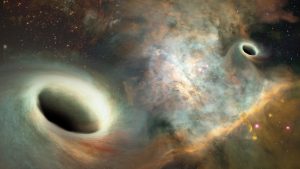
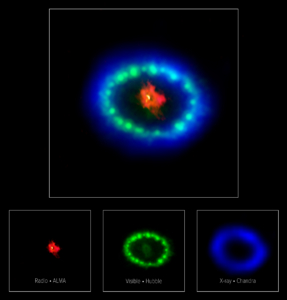
Multiwavelength image of Supernova 1987A
This colorful, multiwavelength image of the intricate remains of Supernova 1987A is produced with data from three different observatories. The red color shows dust and cold gas in the center of the supernova remnant, taken at radio wavelengths with ALMA. The green and blue hues reveal where the expanding shock wave from the exploded star is colliding with a ring of material around the supernova. The green represents the glow of visible light, captured by NASA’s Hubble Space Telescope. The blue color reveals the hottest gas and is based on data from NASA’s Chandra X-ray Observatory. The ring was initially made to glow by the flash of light from the original explosion. Over subsequent years the ring material has brightened considerably as the explosion’s shock wave slams into it.
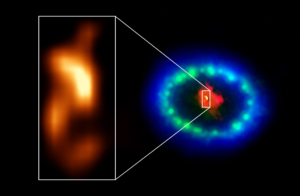
“The blob” in Supernova 1987A
Extremely high-resolution ALMA images revealed a hot “blob” in the dusty core of Supernova 1987A (inset), which could be the location of the missing neutron star. The red color shows dust and cold gas in the center of the supernova remnant, taken at radio wavelengths with ALMA. The green and blue hues reveal where the expanding shock wave from the exploded star is colliding with a ring of material around the supernova. The green represents the glow of visible light, captured by NASA’s Hubble Space Telescope. The blue color reveals the hottest gas and is based on data from NASA’s Chandra X-ray Observatory. The ring was initially made to glow by the flash of light from the original explosion. Over subsequent years the ring material has brightened considerably as the explosion’s shock wave slams into it.
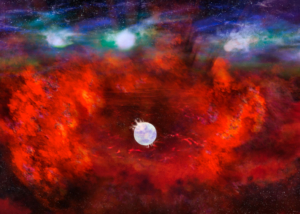
Neutron star in Supernova 1987A
This artist’s illustration of Supernova 1987A shows the dusty inner regions of the exploded star’s remnants (red), in which a neutron star might be hiding. This inner region is contrasted with the outer shell (blue), where the energy from the supernova is colliding (green) with the envelope of gas ejected from the star prior to its powerful detonation.
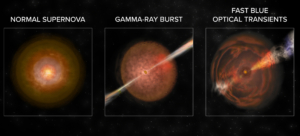
FBOTs, Gamma-Ray Bursts, and Supernovae
Artist’s conception illustrates the differences in phenomena resulting from an “ordinary” core-collapse supernova explosion, an explosion creating a gamma-ray burst, and one creating a Fast Blue Optical Transient. Details in text.

